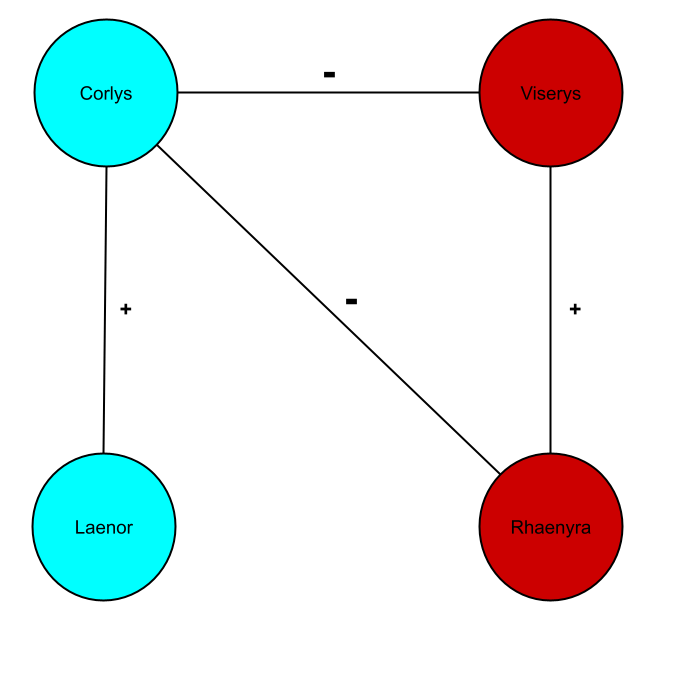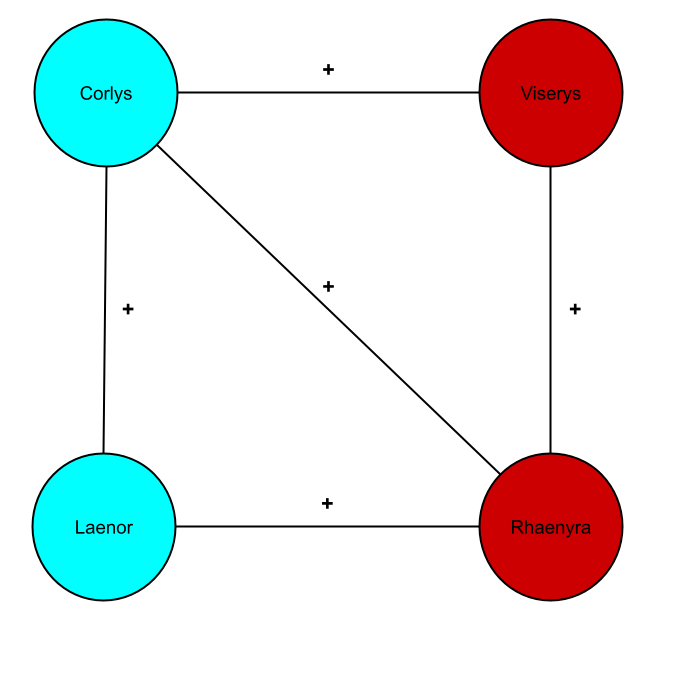Structural Balance in House of the Dragon
The House of the Dragon is a new television series that is based on the book dance of dragons by George R. Martin. It is a series that focuses on the struggle of certain groups to help their preferred candidate become the next king amid an unclear succession. Each house has the ultimate goal of strengthening itself and alliances are made with that in mind. I have been watching the series for the past few weeks, and I have realized that many of the concepts in graph theory can be applied to many of the events in the show. Specifically, I noticed how well the structural balance theory holds up in the various relationships between the characters in the show. There are examples of this throughout the show, and I have chosen 2 examples from episode 5 that show how the changing relationships follow the structural balance theory.



This is a network that represents the relationship between 4 characters in the show. The 2 in red are the current king Viserys, and his daughter and heir to the throne, Rhaenyra. The 2 in light blue is the head of a powerful family Corlyss and his son Laenor. The series of images represent how the characters go from hostile to allies due to a marriage between Laenor and Rhaenyra. The first network is from the beginning of the episode, where Corlyss is hostile to Viserys and Rhaenyra. This network is balanced based on the structural balanced theory and was unlikely to change unless something big happened. Then, a marriage between Laenor and Rhaenyra is agreed to, and that adds a positive tie between the two as shown in the middle networl. This causes the network to become unbalanced due to the triangle between Corlyss, Laenor, and Rhaenyra. The network then quickly becomes balanced again in a way that makes everyone’s relationship positive as shown in the last network. Something as simple and common as a marriage alliance is a clear example of the structural balance theorem at work.
In this example, the network starts unbalanced at the beginning of the episode due to the triangle between Queen Alicent, her father Otto, and Rhaenyra. Otto and Rhaenyra were beyond reconciliation since she just got him removed from a position of power. According to the structural balance theory, Alicent’s relationship would turn negative with either Otto or Rhaenyra. Sure enough, by the end of the episode Rhaenyra, and Alicent went from friendship to hostility largely due to the swaying of Otto. The structural balance theory again holds.
The soundness of the structural balance theory was really showcased when a show which such complex relationships and political intrigue still end up largely adhering to its rules.


